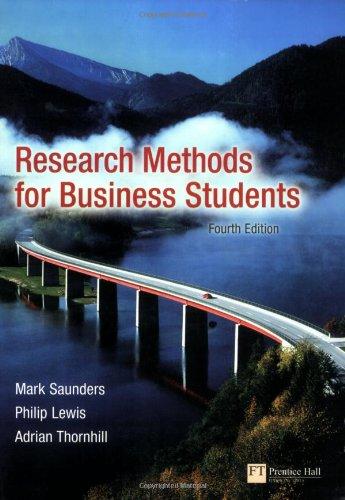After a series of enormously successful business decisions across promotions, operations, and menu innovation, Burger King was posting U.S. sales gains when competitors were failing
After a series of enormously successful business decisions across promotions, operations, and menu innovation, Burger King was posting U.S. sales gains when competitors were failing or stagnant. By mid-2015, Burger King was outperforming McDonald's and Wendy's by significant margins in sales. However, the brand was lagging behind its main competitors in imagery. In the third quarter, Sara and her team turned their attention to refining their advertising strategy and optimizing communications.
Mass communications for quick-service restaurants (QSRS) must drive traffic quickly, often to promote specific menu items with immediate and ambitious sales gain Sara needed to find a way to develop and implement long-range brand planning within the business reality of this fast-moving industry. Her role was to cre ate a strategy that would enable Burger King to tell a consistent brand story with the flexibility to support a wide range of new and core menu items across all-day parts. BK has always been known and loved for " Have It Your Way," flame-grilling, and the Whopper. As the brand evolved, The King was introduced to bring in a younger audience and was later retired in favor of a broader-reaching "Taste Is King" campaign. The question became, what's next for BK marketing?
As CSO (Chief Strategy Officer) of Pitch, Sara partnered with Burger King North America on an action plan to get to the ultimate strategy, with inputs from data mining, consumer research, and competitive analysis. Along the way, Sara and her team reached a key decision point for the Burger King brand: Should they bring back The King or find a new road? Should Burger King's new long-range strategy take advantage of latent equity in a past icon?
OPTION 1
Leave The King in the past where he belongs. The QSR landscape, the economy, and consumer attitudes toward fast food had all evolved since Burger King stopped using The King in 2011. The rise of fast-casual dining options (like Chipotle), health macro trends (clean eating organic), and fast meal behavior changes (i.e., Starbucks and meal replacement bars) all impacted the fast food industry also, even at the height of his popularity, The King was a bit tricky as a company spokesman when depictions were not carefully crafted, he became "creepy and relevant to a narrow audience of millennial men. His edgy persona differentiated him from this group because as a brand icon, he was a part of pop culture and a departure from the typical overly wholesome " mascots " many companies use. Clearly, during the time of his reign, The King was a well-recognized advertising icon, but he was not an automatic traffic driver. Some people thought he had nothing to do with where they were going to eat lunch that day.
On the other hand, it is difficult to cre ate a brand new icon from scratch If a QSR brand doesn't have highly identifiable brand markers (think Ronald McDonald or Wendy's), customers can easily misattribute its mass communications to similar products so you wind up advertising for the competition. The King was like a giant sponge that sucked up earned media coverage (exposure as a result of natural publicity rather than paid advertising ) and kept Burger King in the pop-culture spotlight. That kind of exposure is hard to replicate.
OPTION 2
Bring back The King as an instantly recognizable icon. The King still had high awareness even after several years away from the spotlight. Using The King could boost brand attribution, especially for promotions. As an icon, he had the potential to drive PR and buzz when he authentically and organically fit into pop-culture moments. Using a brand icon is one of the fastest ways to optimize media impact because the icon brings an instant branding kick.
On the other hand, brand spokespeople ( even imagined ones) need to be very carefully crafted and follow strictly adhered-to guidelines or they can become gimmicks. By the end of his reign in 2011, The King was no longer directly tied to business and brand needs when he was used in messaging. A perception existed that The King had become overexposed by the time he retired. To take full advantage of The King's earned media potential, the brand must be willing to make and act on decisions very quickly in a constantly churning Internet news cycle. That would mean resuscitating a new and improved King who would be able to rule over a kingdom that's shaped by unpredictable social media trends rather than the predictable television campaigns of days past.
1- Review Here's my problem.
Review the two options listed and for each option answer the follow
A- Would you choose yes or no
B- Explain your answer
Step by Step Solution
There are 3 Steps involved in it
Step: 1

See step-by-step solutions with expert insights and AI powered tools for academic success
Step: 2

Step: 3

Ace Your Homework with AI
Get the answers you need in no time with our AI-driven, step-by-step assistance
Get Started


